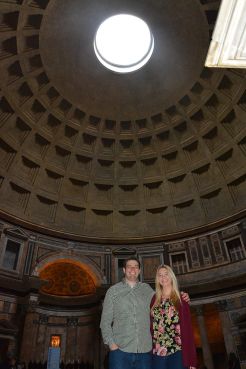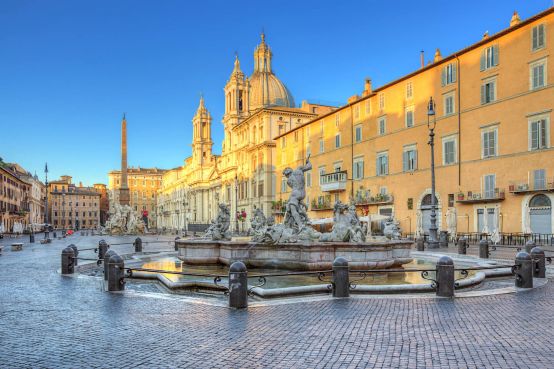Enjoy Private Guided Walking Tour of the Villa Borghese & Borghese Gallery with a licensed expert guide that includes a tour of the Gardens of the Villa Borghese as well as the nearby Church of Artists which houses works by Rafael & Caravagio.
Villa Borghese park covers a vast area in the heart of Rome. It lies between the Aurelian walls that joins Porta Pinciana to Piazzale Flaminio. The villa & its gardens includes buildings, sculptures, monuments and fountains by famous artists of the baroque, neoclassical and Eclectic periods.
In 1613-1616 Scipione Caffarelli Borghese, the favourite nephew of pope Paolo V began buying up a series of vineyards and neighbouring areas of land with the intention of creating a villa as a symbol of the family's status. It saw the start of a vast baroque park that today is linked to the ‘Pincio.
Originally it was divided into three sections: Driveways through the garden with fountains, gravestones and architectural fragments lead to the casino in front of which were situated antique statues and to the sides stretched out the secret gardens. Behind is the private garden with 600 ash trees with the driveways flanked by antique statues , this was followed by an extensive natural park with animal enclosures.
To design and build the Villa Borghese which now houses the Borghese Gallery, two architects were commissioned. The first was Falminio Ponzio, after his death he was followed by Giovanni Vasanzio who created the external façade like the Medici villa.
The gardens were to be laid out by Montepulciano. Decorating it with archaeological exhibits making it clear that the building was clearly destined to be a private museum. This was were the fabulous collection of paintings and antiques were displayed of Scipione Borghese which he enthusiastically increased frequently.
At the end of the XVIII century the villa now owned by the patron Marcantonio IV Borghese, who wanted to transform the main buildings under the direction of Antonio Asprucci. Each room acquired a particular appearance so that the frescoes were in harmony with the works of art on display.
In 1902 the whole of the park and the entire collection of artwork was purchased by the King of Italy Umberto I and donated to the city of Rome. It was followed by its transformation from one of the richest private collections into a public museum today known as the ‘Galleria Borghese' which has recently reopened after a long restoration period.
According to the wishes of Prince Marcantonio Borghese at the end of the XVIII century, the baroque garden was transformed by Christoph Unterberger into an English garden which today along with the ‘Pincio makes up the largest garden in the city. In accordance with the taste of the era within the garden were erected scattered buildings in antique style.
Amongst which are the temple of Faustina, (wife of emperor Antonino Pio), the small round temple of Diana, and in the middle of an artificial lake the temple of Aesculapius by the architect Antonio Asprucci. From 1902 the park became property of the state and was opened to the public. In the cession document the state had agreed to maintain the Casino Nobile and it's art collection and turn the building into a public museum.












